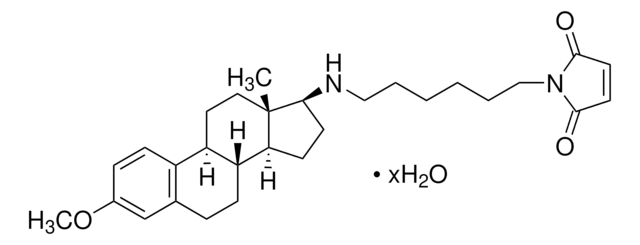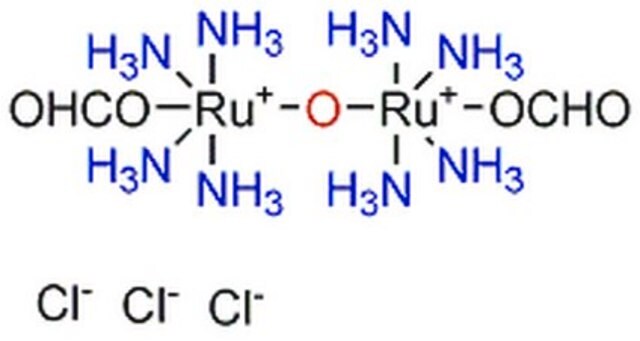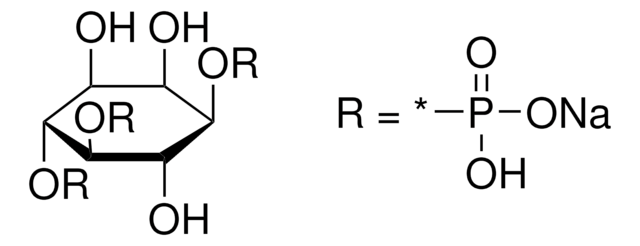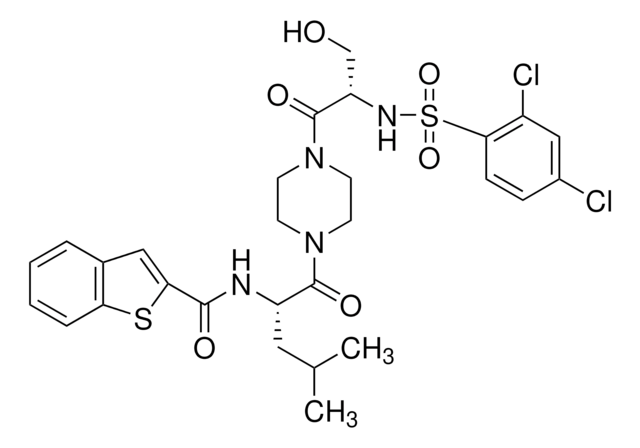100065
2-APB
≥97% (titration), crystalline solid, Ins(1,4,5)P3-induced Ca2+ release inhibitor, Calbiochem®
Synonyme(s) :
2-APB, 2-Aminoethoxydiphenylborate, (2-Aminoethoxy)diphenylborane
About This Item
Produits recommandés
product name
2-APB, A cell-permeable modulator of Ins(1,4,5)P3-induced Ca2+ release.
Niveau de qualité
Pureté
≥97% (titration)
Forme
crystalline solid
Fabricant/nom de marque
Calbiochem®
Conditions de stockage
OK to freeze
desiccated (hygroscopic)
Couleur
white
Solubilité
DMSO: 20 mg/mL
95% ethanol: 25 mg/mL
Conditions d'expédition
ambient
Température de stockage
2-8°C
InChI
1S/C14H16BNO/c16-11-12-17-15(13-7-3-1-4-8-13)14-9-5-2-6-10-14/h1-10H,11-12,16H2
Clé InChI
BLZVCIGGICSWIG-UHFFFAOYSA-N
Description générale
Actions biochimiques/physiologiques
Ins(1,4,5)P3-induced Ca2+ release
Conditionnement
Avertissement
Reconstitution
Autres remarques
Gregory, R.B., et al. 2001. Biochem. J.354, 285.
Ma, H.T., et al. 2001. J. Biol. Chem.276, 18888.
Ascher-Landsberg, S., et al. 1999. Biochem. Biophys. Res. Commun.264, 979.
Maruyama, T., et al. 1997. J. Biochem.122, 498.
Informations légales
Mention d'avertissement
Warning
Mentions de danger
Conseils de prudence
Classification des risques
Eye Irrit. 2 - Skin Irrit. 2 - STOT SE 3
Organes cibles
Respiratory system
Code de la classe de stockage
11 - Combustible Solids
Classe de danger pour l'eau (WGK)
WGK 3
Point d'éclair (°F)
Not applicable
Point d'éclair (°C)
Not applicable
Certificats d'analyse (COA)
Recherchez un Certificats d'analyse (COA) en saisissant le numéro de lot du produit. Les numéros de lot figurent sur l'étiquette du produit après les mots "Lot" ou "Batch".
Déjà en possession de ce produit ?
Retrouvez la documentation relative aux produits que vous avez récemment achetés dans la Bibliothèque de documents.
Les clients ont également consulté
Notre équipe de scientifiques dispose d'une expérience dans tous les secteurs de la recherche, notamment en sciences de la vie, science des matériaux, synthèse chimique, chromatographie, analyse et dans de nombreux autres domaines..
Contacter notre Service technique
















